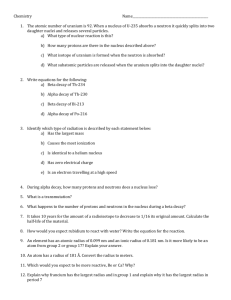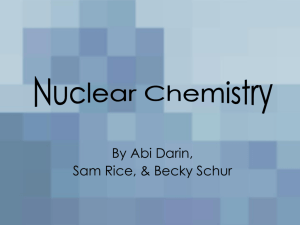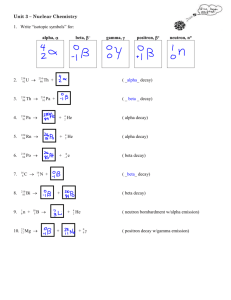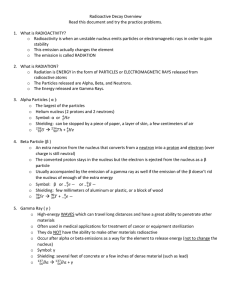Fission vs. Fusion
advertisement
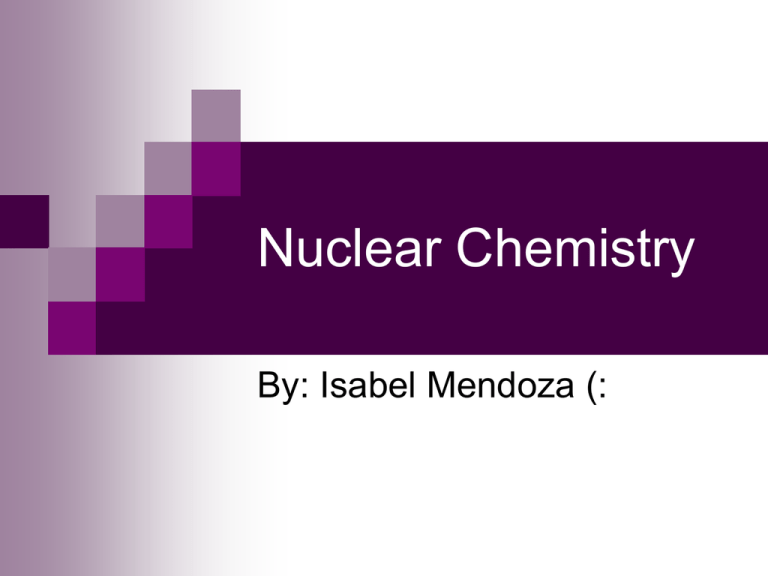
Nuclear Chemistry By: Isabel Mendoza (: The Nucleus The center of an atom, it consists of nucleons (protons & neutrons). The radius of the nucleus is 100,000 times smaller than the radius of the atom. Isotopes Different nuclei of the same element will all have the same number of protons. The number of neutrons can be different. The element will have a different atomic mass. Ex: Fusion Fusion occurs when small nuclei combine into a larger nucleus. Fission Fission is the process in which a large nucleus splits into a small nuclei. Fission reactions release more neutrons, these neutrons will allow other atoms to undergo fission. Radioactive Decay Radioactive decay is a naturally occurring spontaneous decay of certain nuclei accompanied by the emission of specific particles. Alpha Decay Beta Decay Gamma Decay Positron Emission Alpha Decay Alpha decay is the emission of an alpha particle, which is a He-4 nucleus that has 2 protons and 2 neutrons. Beta Decay Beta decay is the emission of a beta particle, which is an electron with the symbol e- or β -. Beta radiation is more penetrating than alpha radiation. Gamma Decay Gamma decay is the emission of gamma rays, which are high energy protons. They carry no charge and lower energy levels without changing the mass number or atomic number. Positron Emission Positron emission occurs when a positivelycharged particle is emitted. The positron is given the symbol e+ or B+. During the decay a proton splits into a positron and a neutron. Radioactive Decay Half-Life The time it takes for half life of an atom to decay.



